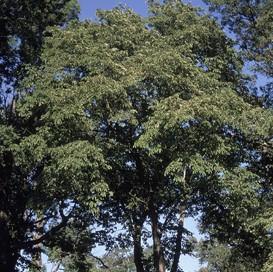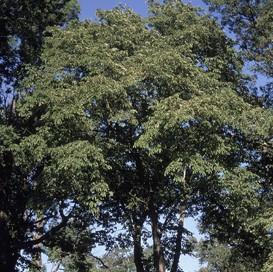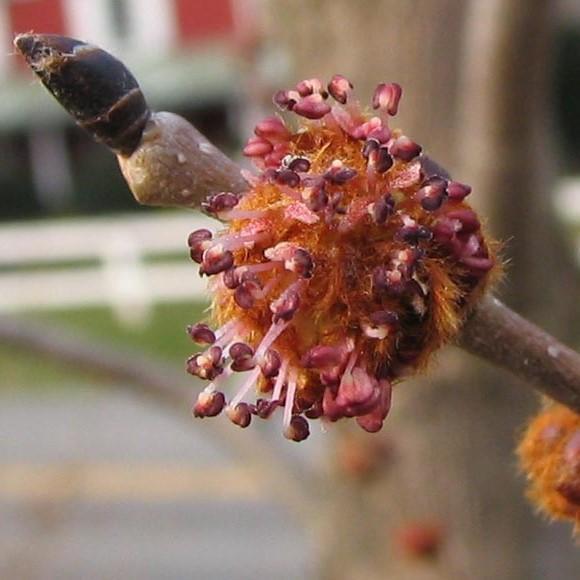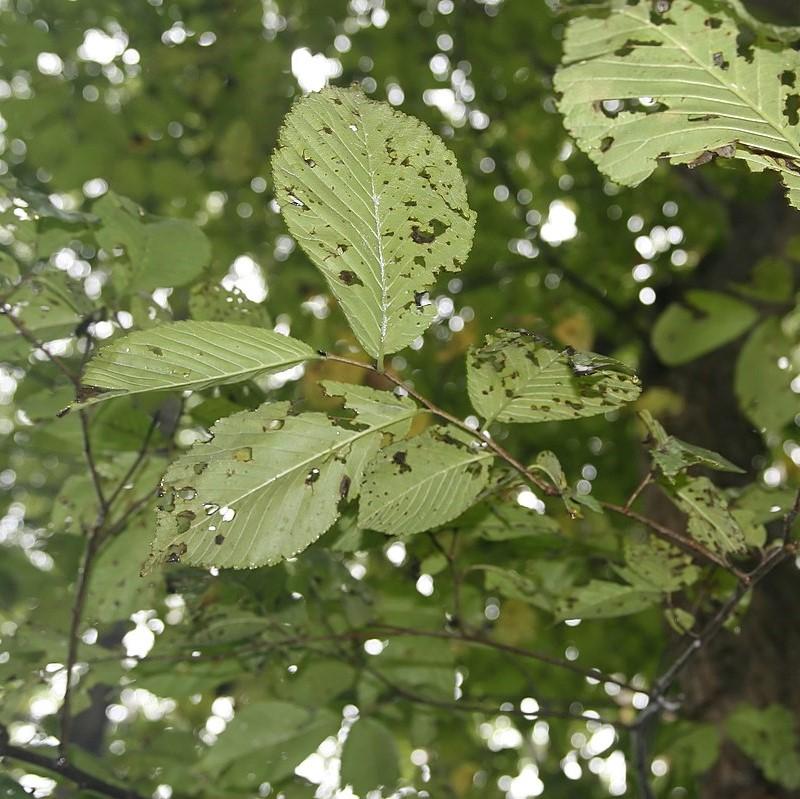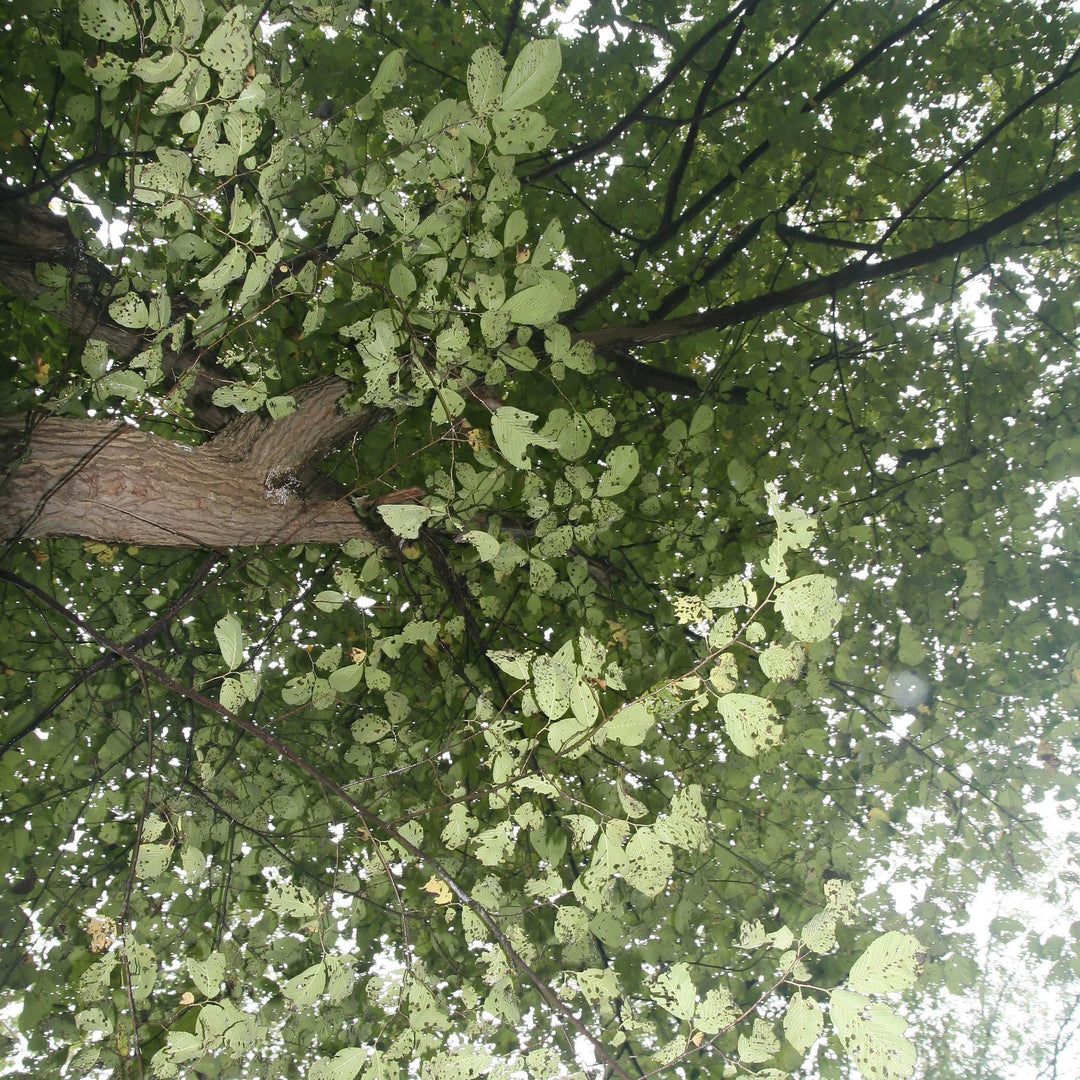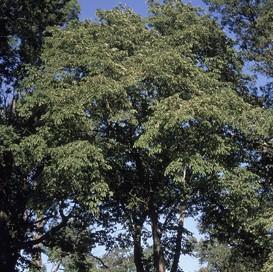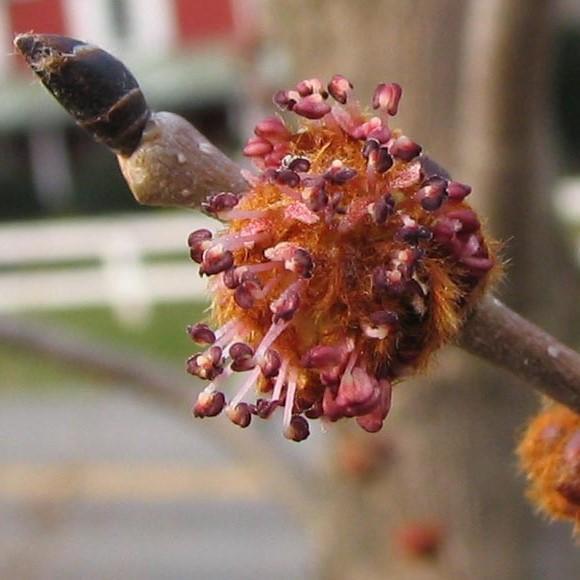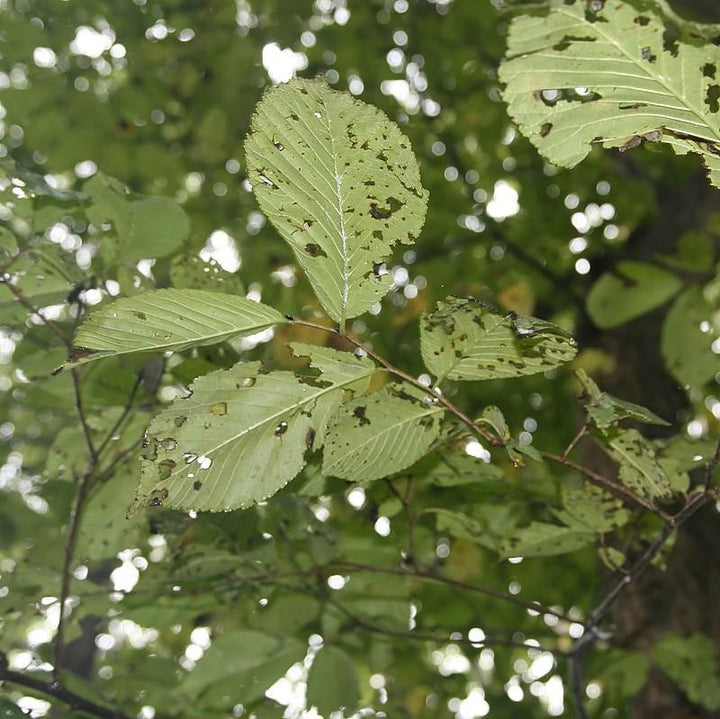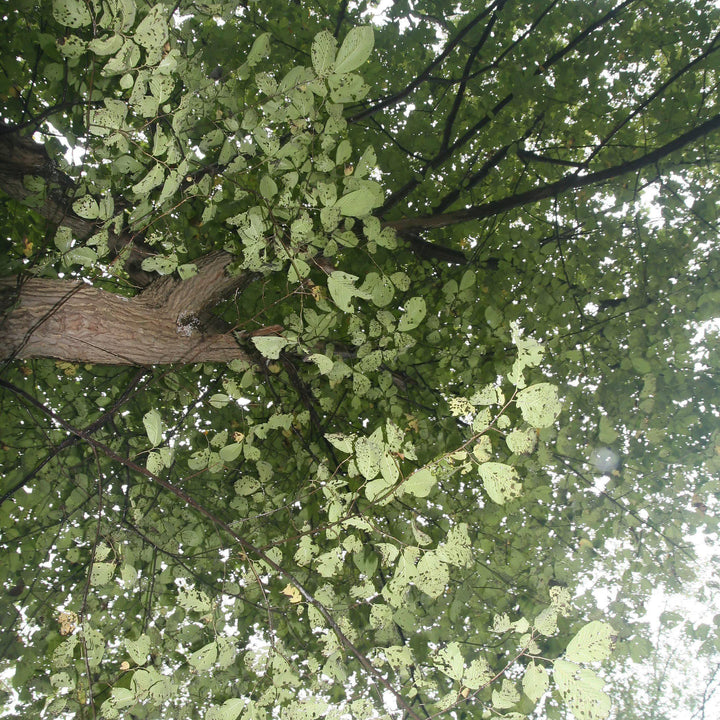Slippery Elm is a native deciduous tree with a vase-shaped to broad rounded crown, downy twigs, and red buds that are noticeable in winter. The serrated, rough dark green leaves with asymmetrical bases often emerge with a red tint and turn an undistinguished dull yellow in fall. Inconspicuous red flowers bloom in spring before the foliage and give way to papery wing-like seed pods that mature mid-spring. Grows best with full sun and rich, moist well-drained soils. Tolerates light shade.
Ulmus rubra is host plant for several butterfly and moth species.
|
Type: |
|
|
Origins: |
East N. America; GA Native |
|
Height: |
40’ - 60’ |
|
Spread: |
30’ - 50’ |
|
Spacing: |
40’ |
|
USDA Hardiness Zone: |
3 - 9 |
|
Culture: |
|
|
Bloom Color: |
Red |
|
Season of Interest: |
MAINTENANCE NEEDS: Low Maintenance. Elms are susceptible to Dutch Elm disease and phloem necrosis, which is fatal, and wetwood which causes dieback. Other potential issues include wilts, rots, canker, leaf spots as well as pests such as miners, borers, and scale.
LANDSCAPE USES: Accents or Group Plantings, Borders, Woodland Gardens, Rock Gardens, Ponds and Streams, and Shade Tree.
COMPANION PLANTS: Eastern Redbud, Dogwood, Musclewood
IMAGES: Photo by Ohio Department of Natural Resources, Mature Ulmus rubra in graveyard (2) anonymous, Ulmus rubra flowers, CC BY-SA 3.0, (3) Photo by David J. Stang, Ulmus rubra 9zz, CC BY-SA 4.0, (4) Photo by David J. Stang, Ulmus rubra 10zz, CC BY-SA 4.0
*As plants have ranges in appearance they may not appear as the images shown.


